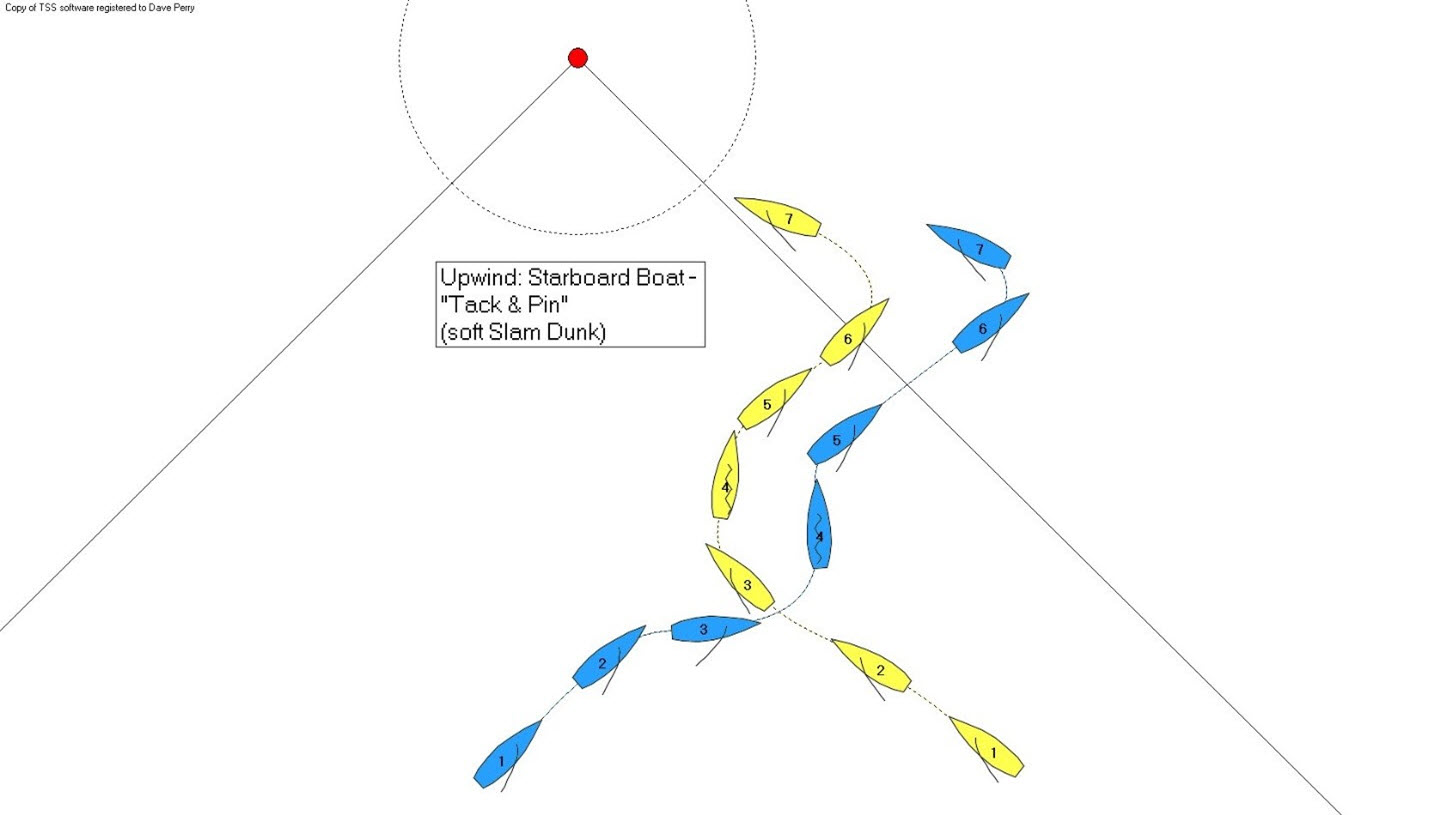Brain Food for the Match Racing Mind
Published on July 21st, 2015
by Dave Perry, 4x U.S. Match Racing National Champion
In a close match race, it is common for the two boats to meet often on the beat. The boat on the right (starboard or S) has the advantage, but it must play it smart or risk losing control of the right…and the race.
The strongest move is for S to wait for P to begin bearing away to duck her, and then tack to leeward of her (leebow). P will either tack away immediately, or try to live on S’s hip (which is usually a losing move for P).
But sometimes S meets P at a position 3 to 4 lengths down from the starboard layline (which I call No Man’s Land), such that a leebow won’t work because P will easily be able to live for the 3 to 4 lengths it will take to pin S past the starboard layline. In that situation, the tactic of choice is the “Soft Slam.”
Soft Slam Dunk
OBJECTIVE: For S to tack just to windward of P and control her, or prevent her from tacking for a short time, but far enough away that P can’t luff and attack S.
MANEUVER: S must be sailing close-hauled when P’s bow arrives at S’s transom (important to remember if S has started the tactic with a hunt down). When P’s bow arrives at S’s transom, S counts “1-2-tack”, putting her helm down on the word “tack”. If S tacks in the correct place, P will be far enough away from S that she cannot reach S when she luffs. If P tacks, she will be too close to assert her right of way (see rule 15, acquiring right of way) and will usually pass astern of S. It is powerful for S’s driver to turn facing aft in the tack, when possible, so she can see P’s bow the entire time.
Excerpted from the North U Match Racing Playbook, third edition. Available at North U.










 We’ll keep your information safe.
We’ll keep your information safe.